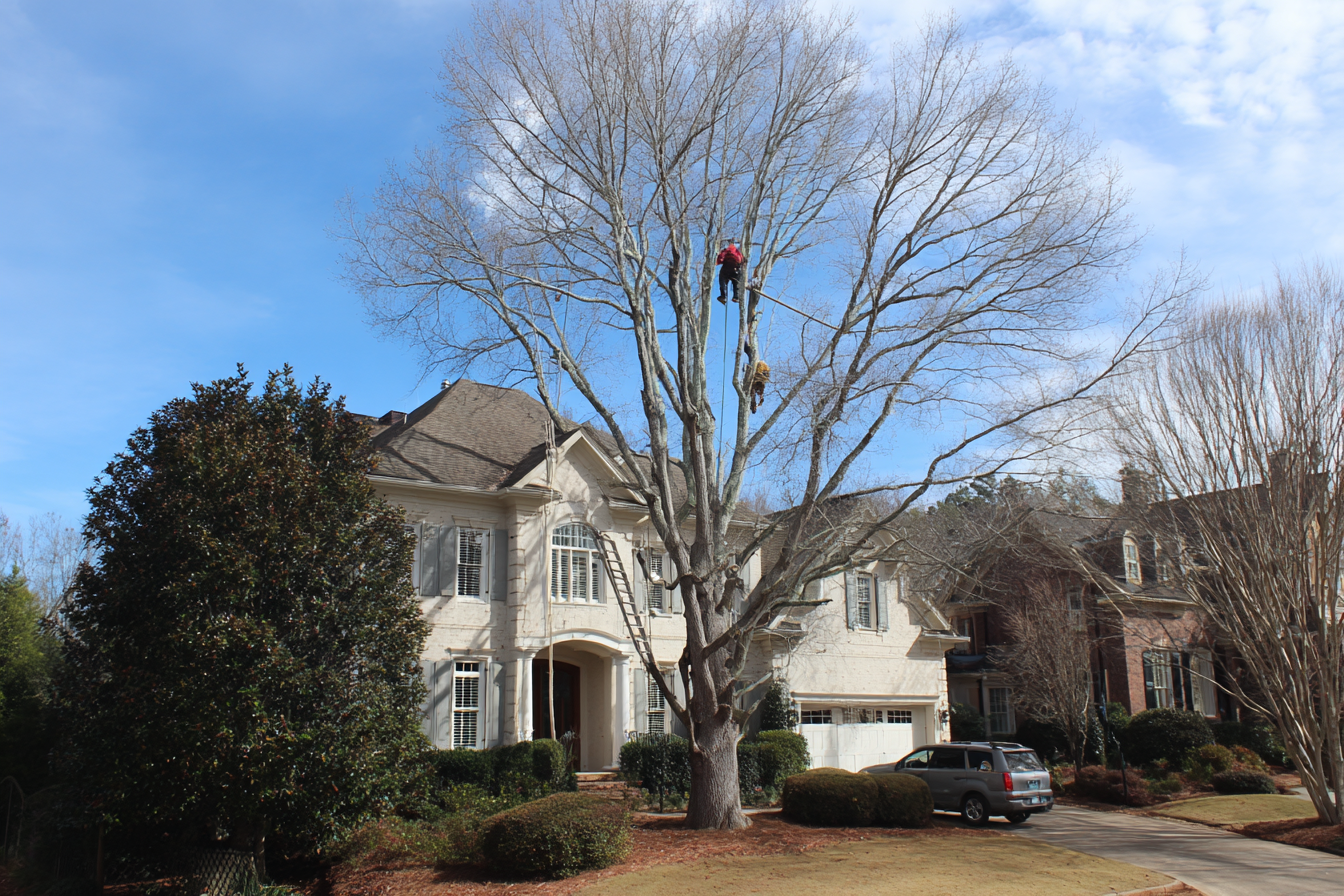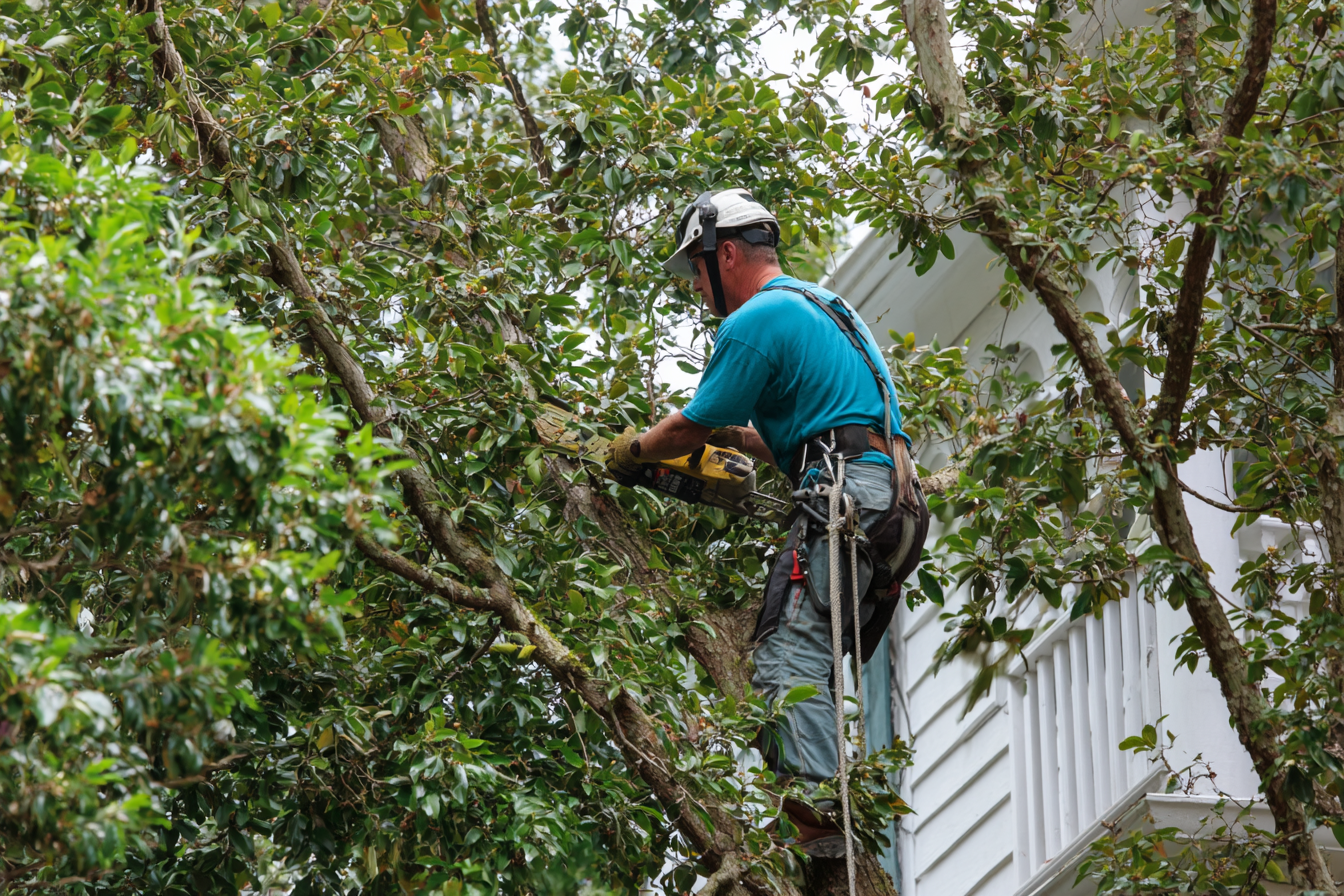
Knowing when to trim your trees isn’t just a matter of convenience—it’s essential to your landscape’s long-term health and beauty. In Georgia’s unique climate, where hot summers, humid air, and mild winters shape our ecosystems, the timing of tree care plays a critical role in growth, safety, and sustainability.
At Georgia Pro Tree Services, we know that improperly timed tree trimming can lead to disease, stunted growth, or unnecessary stress. On the other hand, properly timed pruning encourages healthy branches, improved structure, and an extended life span for your trees. This guide offers a detailed look at the best seasons for trimming, species-specific considerations, and key signs that your tree might need attention—no matter the calendar.
Why Tree Trimming Timing Matters in Georgia
The timing of your tree trimming directly impacts how well a tree responds. Each season affects sap flow, dormancy, energy allocation, and vulnerability to pests. A tree trimmed at the wrong time can suffer long-term damage or become more susceptible to disease. But when trees are trimmed in alignment with their natural cycles, they recover faster, develop stronger limbs, and resist environmental stress more effectively.
Georgia’s growing conditions complicate matters further. Our warm, extended summers and short, relatively mild winters shift traditional tree care timelines. This makes localized expertise especially important when deciding when to trim.
Winter: The Prime Time for Most Tree Trimming
Winter is widely considered the ideal season for tree trimming in Georgia, particularly from December through early March. This is when most deciduous trees enter dormancy. During this phase, their energy output slows, sap flow reduces, and branches become bare, offering a clear view of structure and form.
Trimming in winter allows arborists to make strategic cuts without causing excessive stress. Since pests and pathogens are largely inactive in colder months, the risk of infection is lower. Wounds created by trimming have ample time to begin healing before spring growth sets in.
Trees like oaks, elms, and maples respond especially well to winter pruning. If your trees haven’t been trimmed in several years or require major structural corrections, this is the season to act.
Spring: Limited but Useful Trimming Opportunities
Spring is when trees awaken. As temperatures rise, sap begins to flow and new shoots and leaves emerge. This period, while beautiful, is not ideal for heavy pruning. Cutting back trees during early spring can interfere with natural energy distribution and compromise bloom production for flowering species.
Still, spring offers some advantages. Once trees have completed their bloom cycle, light shaping is safe for ornamental species like dogwoods or cherry trees. Spring is also the perfect time to remove any branches damaged by winter storms. If you notice limbs that are cracked, sagging, or dead as leaves begin to grow, it’s best to address them sooner rather than later.
That said, avoid major pruning during peak bloom or early leaf-out, as it can reduce vitality and lead to unnecessary stress.
Summer: Best for Maintenance and Visibility Corrections
By summer, your trees are in full growth mode. Leaves are dense, canopies are lush, and limbs may begin to stretch into areas where they don’t belong. While summer isn’t the season for deep cuts or structural rebalancing, it is well-suited for maintenance and clearance trimming.
This is the time to handle limbs that are blocking visibility around driveways, leaning over rooftops, or encroaching on power lines. Summer trimming also helps reduce storm damage risk by removing weak or overgrown branches before hurricane season. Water sprouts and suckers—those fast-growing, weak shoots—can be removed to redirect energy to stronger growth.
However, care should be taken not to over-prune in the heat of the season. Trimming too much foliage can expose inner branches to sunscald or cause dehydration. Oaks, in particular, should be left alone during summer to avoid the spread of oak wilt—a serious disease that peaks during this time.
Fall: A Common Mistake for Tree Trimming
While fall may feel like the natural time to “clean up” your trees, it is, in fact, one of the worst seasons for heavy pruning in Georgia. As temperatures cool, trees begin their slow descent into dormancy. Cutting branches during this transition weakens the tree’s ability to seal wounds properly before winter. Open cuts can become breeding grounds for decay and disease, especially with Georgia’s lingering humidity.
Although it’s tempting to tidy your landscape after summer, it’s better to wait until full dormancy arrives in winter. The exception is for emergency trimming—removing dead, broken, or clearly hazardous branches. But for aesthetic or structural pruning, delay the work until late winter.
Species-Specific Tree Trimming Considerations
Tree species respond differently to trimming. A one-size-fits-all approach doesn’t work, especially in Georgia’s diverse urban and suburban tree landscape.
Oak trees are best pruned in the depths of winter. Any cuts made during spring or summer can lead to the introduction of oak wilt. Maples and elms follow a similar winter schedule, thriving when trimmed while dormant.
Crepe myrtles, often over-pruned in Georgia, should only be trimmed lightly in late winter. Avoid cutting them back to stubs, a practice known as “crepe murder,” which weakens the tree and distorts its shape.
Flowering trees, such as cherry or dogwood, benefit from post-bloom trimming. Cutting too early in spring can prevent them from flowering the following year.
Pine trees and other evergreens need minimal trimming. Light shaping in winter is usually sufficient. Over-pruning conifers can result in permanent bald spots since many do not regrow from old wood.
Fruit trees like apple or peach varieties, common in Georgia gardens, respond well to late-winter pruning. This encourages fruit development and prevents overcrowding as the growing season begins.
Don’t Ignore Warning Signs—Even If It’s the “Wrong” Season
While seasonality is important, there are situations where tree trimming shouldn’t be delayed. Certain structural issues pose serious risks to your property and safety and should be addressed immediately.
Dead or dying branches, especially those hanging over homes or walkways, can fall unexpectedly. Cracks in limbs or visible rot at the base of a branch require quick action. Trees leaning toward power lines or growing too close to your home’s siding or roof should also be evaluated by a professional without waiting for the calendar to change.
Timely intervention not only prevents damage but often saves the tree itself from further decline.
Professional vs. DIY Tree Trimming: Why It Matters
Tree trimming may appear simple at first glance, but poor technique can cause long-term damage. Inadequate cuts can create entry points for disease, while trimming too much can weaken the tree's structure or unbalance its growth.
Professionals understand tree biology. They know where to cut, how much to remove, and when to do it to ensure minimal stress and maximum health. Trained arborists also work safely around electrical lines, rooftops, and mature trees that require climbing.
Equipped with the right tools and insurance, Georgia Pro Tree Services offers peace of mind and expert results—without risking your property or personal safety.
The Long-Term Value of Proper Seasonal Tree Trimming
Trimming trees at the right time each year helps them grow stronger, live longer, and resist disease. It also enhances curb appeal, boosts property value, and creates safer outdoor spaces.
Seasonal trimming isn’t just about looks—it’s a vital component of proactive landscape management. In Georgia’s variable climate, where one storm can topple a poorly maintained tree, being proactive rather than reactive is not just smart—it’s essential.
Book Expert Tree Trimming in Georgia with Confidence
When it comes to trimming your trees, timing is everything. Whether your goal is safety, beauty, growth, or all three, Georgia Pro Tree Services is here to help you get it right. Our certified arborists understand the science behind seasonal pruning and bring years of experience working with Georgia’s native and ornamental trees.
Don’t wait for a broken branch to become a bigger problem. Schedule your professional tree trimming now and give your trees the care they need—when they need it most.
Call Georgia Pro Tree Services today to request your free estimate for expert tree trimming services in Georgia.

We're your local tree pros!
Georgia Pro Tree Services takes the highest quality of care when servicing your trees. Call us to find out how we can help you keep your yard in top shape.



